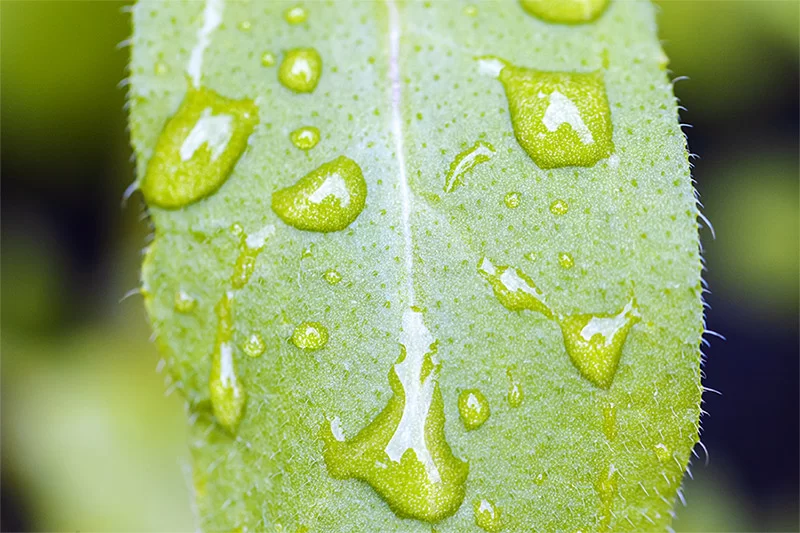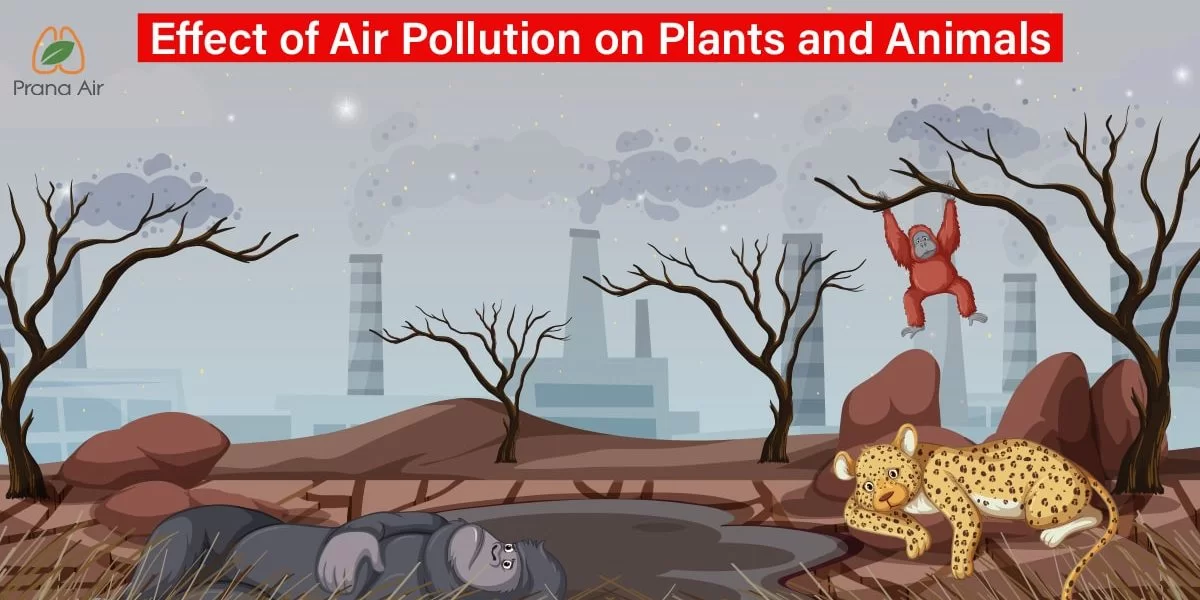Unwanted compounds in the air disrupt the atmosphere’s normality and welfare, as well as those of living creatures. Any physical, chemical or biological disturbance to the air might be considered air pollution. When we think of air pollution, mostly we think about damage to humans. We often tend to forget the effect of Air Pollution on Plants and Animals.
Effect of Air Pollution on Plants
Pollutants are mostly absorbed by plants through their leaves. A minor penetration through the stems and trunk is also possible. The pollutant must first pass through the “border layer”. It corresponds to the layer of air that is not stirred in contact with it, before reaching the leaf. The size and structure of the leaf and wind speed influence the thickness of this layer. Its thickness is in the tenths of an mm range. After penetration, the physiological reaction of plants to air pollution will be determined by two factors:
- The plant’s features
- The kind of pollution
1. Acid Rain

Acid rain, which is caused by air pollution, makes the water and soil more acidic. When it comes to plants, acid rain:
- Reduces the number of accessible soil nutrients
- Damages the root and shoot systems
- Stunts growth
Although certain plant and animal species are tolerant to changes in pH, in a linked ecosystem, it can disrupt the food chain and potentially wipe out an entire species.
2. Ozone Shield Depletion
Plants and animals are claimed to die as a result of ozone depletion’s ‘indirect’ killing process. According to a research, the ozone hole has wiped off almost 30% of plant species. Most plants are affected by ozone (O3), which causes foliar ulcers. It can also penetrate the stomata (plant breathing holes) and decompose plant cells directly. O3 can potentially lead to impaired growth and, in the worst-case scenario, death. Moderate ozone damage can be seen on potato leaves as brown spots. UV radiation inhibited photosynthesis, accelerated evaporation, and caused genetic changes in plants.
3. Ground-level ozone
Plant respiration is inhibited by ozone molecules near the ground. They obstruct the apertures in leaves where respiration takes place. A plant will not be able to photosynthesize if it does not breathe, and so will not be able to grow. It was reported in 2014 that air pollution from black carbon and ground-level ozone had cut agricultural yields in the most impacted areas by nearly half in 2011 compared to 1980 levels in the most affected districts.
4. Excessive Nitrogen
Nitrogen is a necessary plant nutrient. But rising quantities of nitrogen deposition in the atmosphere can put ecosystems under stress. Excess nitrogen functions as a fertilizer. This benefits some plants while putting others at a disadvantage. This causes natural ecosystems to become unbalanced, with long-term consequences such as:
- Shifts in plant and animal species
- A rise in pest and disease outbreak
- Disturbance of ecosystem processes such as nutrient cycle and fire frequency
5. Soil Pollution
Heavy metals and other air pollutants that are deposited on the soil initially influence the functioning of roots. They interfere with the plant’s ability to acquire soil resources. Reduced resource acquisition will have an impact on plant development. This is because of the changes in resource allocation to various plant structures. At the ecological level, pollution can alter the competitive balance among the species present. This results in changes in the plant species composition. Reduced economic yield may be a result of these changes in the agroecosystems.
Effect of Air Pollution on Animals
1. Altered animal behavior
Pollutants have been shown in a growing number of studies to cause strange behavior in animals. Endocrine disruptors, heavy metals, and PCBs have a direct impact on animal social and mating behavior.

2. Diseases and Mortality
The impact is usually indirect, but it gradually kills animals by altering biological systems. Pollutants in the air impair endocrine function, harm organs, and reduce reproductive success. Long-term exposure to contaminants can boost neurodegenerative disease disorders.
3. Biodiversity loss
The fundamental structure and function of ecosystems are being altered by air pollution. Excess nitrogen deposition in the form of ammonia is one of the most significant stressors on biodiversity. Biodiversity is important for animals since its loss can trigger changes in the food chain and the extinction of some species. Moreover, the loss of biodiversity can potentially raise the danger of infectious illnesses.
4. Change in species distribution
A shift in the abundance of a species can be caused by industrial air pollution. For example, increasing aluminum levels may cause:
- Extinction of some fish species
- Allowing bug species to thrive
- Benefit ducks that feed on insects.
However, eagles, ospreys, and other fish-eating creatures may suffer as a result of this loss.
5. Eating Plants with Pollutants
When animals eat particulate-coated plants, they get Arsenic poisoning. In pets, lead poisoning causes pneumonia and a loss of appetite. Moreover, pesticides can cause difficulties breathing, drowsiness, muscular spasms, vomiting, and loss of coordination in animals.
These were some of the Effects of Air Pollution on Plants and Animals







